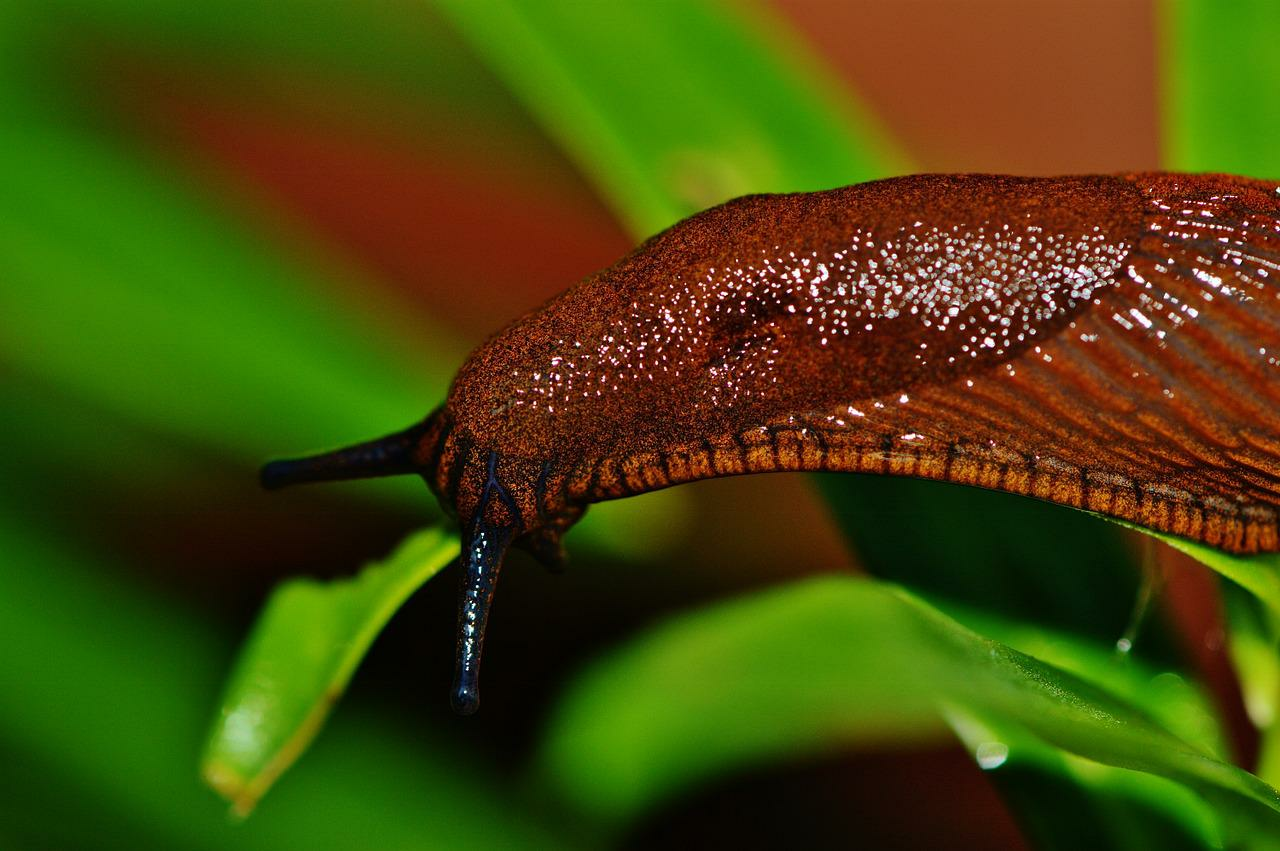
How to Prevent and Combat Plant Pests: An Overview
So-called "pests" in the garden can make life very difficult. In this article, we will show you an overview of the most important pests in the garden and how you can prevent them. If it is too late, we will show you ecological control methods that will help you to get rid of the pests.
This Article Contains:
- What Are Plant Pests?
- Plant Pests at a Glance
- Grubs as Plant Pests and Beneficial Insects
- Recognizing and Combating Aphids
- Snails in the Garden
- Combat Voles
- Fighting Spider Mites: These Household Remedies Help
- Recognizing and Combating Scale Insects in the Garden
- Mealybugs
- Frequently Asked Questions About Plant Pests
Quick Overview
Prevent Pests in the Garden:
- Encourage beneficial insects (natural elements in the garden such as deadwood piles, rock piles, insect hotels, bird hedges, flower meadows for pollinators)
- Correct choice of location (adapted to the respective plant, sufficient light, good aeration)
- Balanced fertilization (not too high in nitrogen)
- Check newly purchased plants (seedlings, houseplants) for pests
Combat Plant Pests:
- Neem oil
- Plant juices, plant broths (home-made)
- Collecting (insects + snails)
- dust with stone dust (insects, mites)
- Rinse with water (insects, mites)
- Snail fence or wire mesh
What Are Plant Pests?
Pests are organisms (often insects, but also larger organisms) that reduce the economic success of humans. This can be through the destruction of crops, competition for food or the destruction of buildings. In the garden, we are primarily interested in"plant pests" that damage, reduce or even completely destroy our harvest. However, it is important to mention that the term "pest" was coined by us humans. An aphid is therefore never "just" a pest, but also a co-inhabitant of our gardens.
Pests and Beneficial Insects
They play an important role in the complex ecosystem that we humans are constantly fragmenting, changing and dividing. So ants and snails not only damage our beds, they also ensure the decomposition of organic material and thus promote the fertility of our soil. In addition, many pests are an important link in the food chain of other organisms. In this way, a pest quickly becomes a "beneficial organism". Beneficial organisms usually help us to keep pests in check by displacing or preventing harmful organisms. In our article, you can find out How You Can Specifically Use Beneficial Insects to Combat Pests. If we recognize and respect the network of nature, we create important and healthy habitats. It is important to get to know and understand our ecosystems before rushing into action. For this reason, we don't like to talk about "controlling pests" but rather "remedying pest infestations".
Plant Pests at a Glance
Pests can be divided into different groups. On the one hand, there are insect pests. The most important of these include piercing-sucking plant lice (aphids, scale insects, mealybugs) as well as grubs, beetles or the caterpillars of some butterflies. On the other hand, there are snails or larger animals such as moles or voles that can damage your beds.
Grubs as Plant Pests and Beneficial Insects
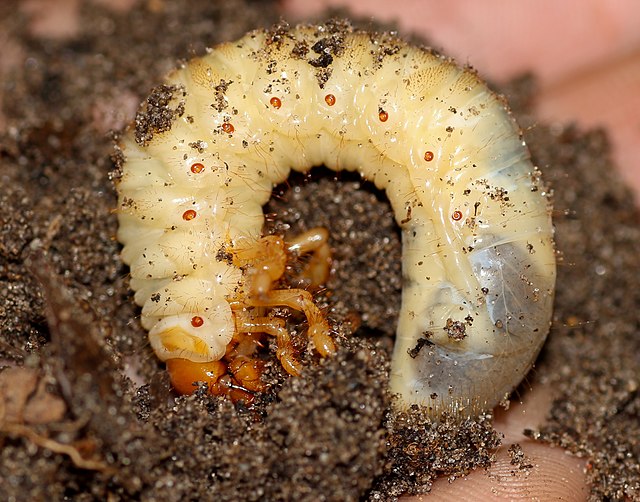
There are four main species that rarely cause major damage: The grubs of the June beetle, the cockchafer, the rhinoceros beetle and the rose chafer. Rhinoceros beetle and rose chafer grubs are beneficial insects because they decompose dead wood or other dead plant material. This creates fertile humus that we can use for our plants!
The two beetle larvae can be distinguished by certain characteristics: The rhinoceros beetle can grow up to 10 cm/3.9 in in size and, unlike the other grubs, it lacks the "row of small spines" on its abdomen (small hair-like structures). The grubs of the rose chafer are very similar to harmful grubs, but they differ in the way they move. This takes place in a supine position. The grubs of the cockchafer are among the most important pests. They feed mainly on grass roots, especially in the second of their four larval years. They can damage lawns in the process. However, many young plants such as potatoes, beets, strawberries or lettuce can also be infested by white grubs. The June bug also likes to attack plant roots. These plant pests can be distinguished from beneficial grubs by the way they move. The grubs of the cockchafer move by wriggling sideways, while the grubs of the June bug crawl in a prone position.
Prevent Grubs
- Hoe the ground
- Encourage natural enemies such as sparrows, starlings, hedgehogs, etc. You can do this by creating hibernation sites. For example, with deadwood piles, piles of leaves, raking, bird houses, bird hedges and trees.
- Plant garlic as a catch crop
Fighting Grubs / Remedy
- Collecting. As already mentioned, however, you should distinguish between beneficial and harmful grubs!
- Geraniums and delphiniums are poisonous to the larvae. When used selectively, these plants can therefore help against grubs.
- Use nematodes against white grubs. You can buy these on the internet.
Recognizing and Combating Aphids
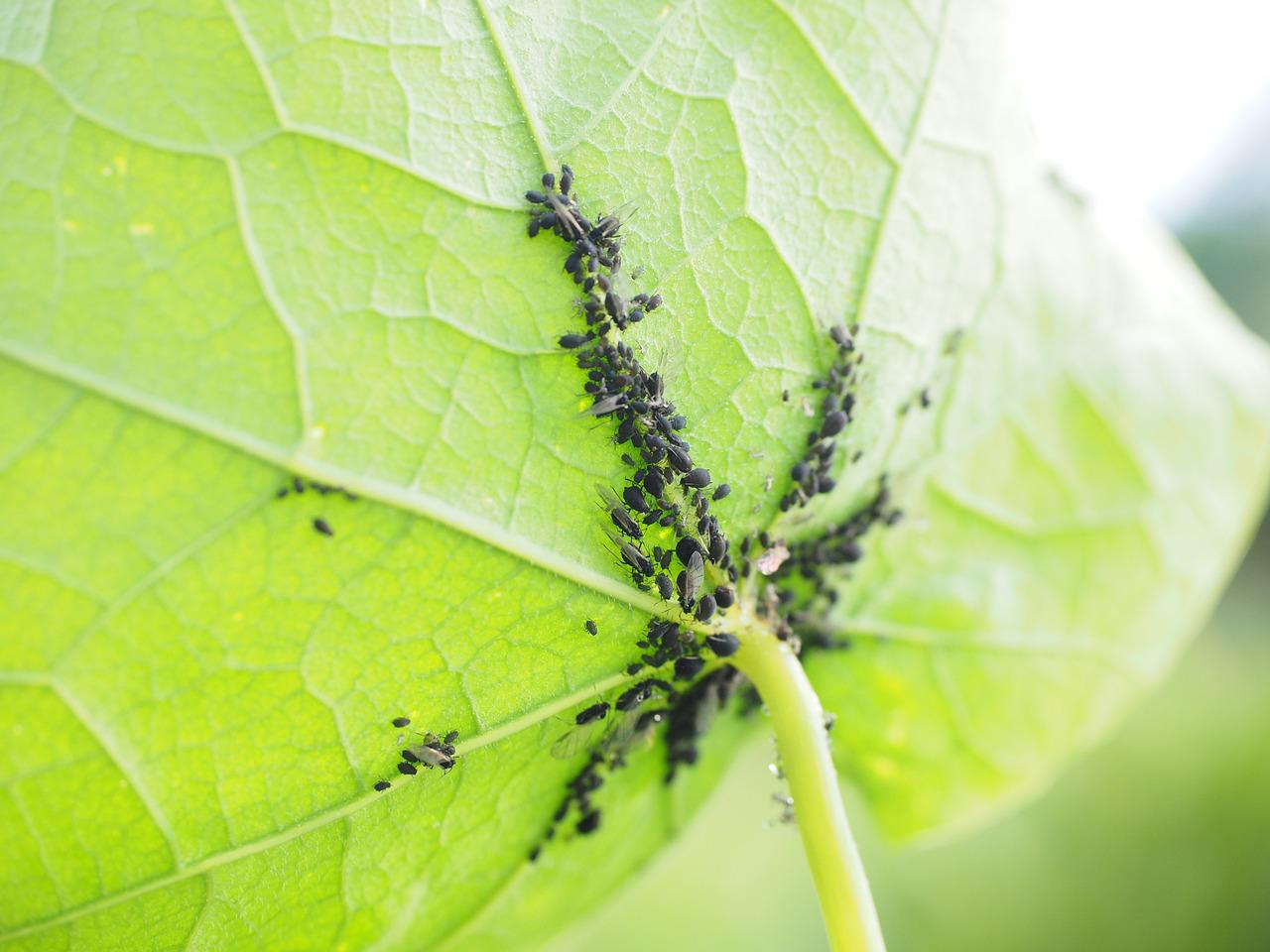
The pests often emerge en masse as they can multiply very quickly. Aphids bite the plants and thus extract nutrients and a lot of sugar from them. They excrete most of this again, creating what is known as "honeydew". The honeydew attracts ants and the black sooty mold fungus. The dark fungus covers the leaves so that photosynthesis can no longer take place efficiently. As soon as the aphids and their honeydew disappear, the fungus also disappears. Aphids can also spread viral diseases that are almost impossible to combat. You can find out what you can do against aphids in the garden in our article Fighting and Preventing Aphids.
Snails in the Garden
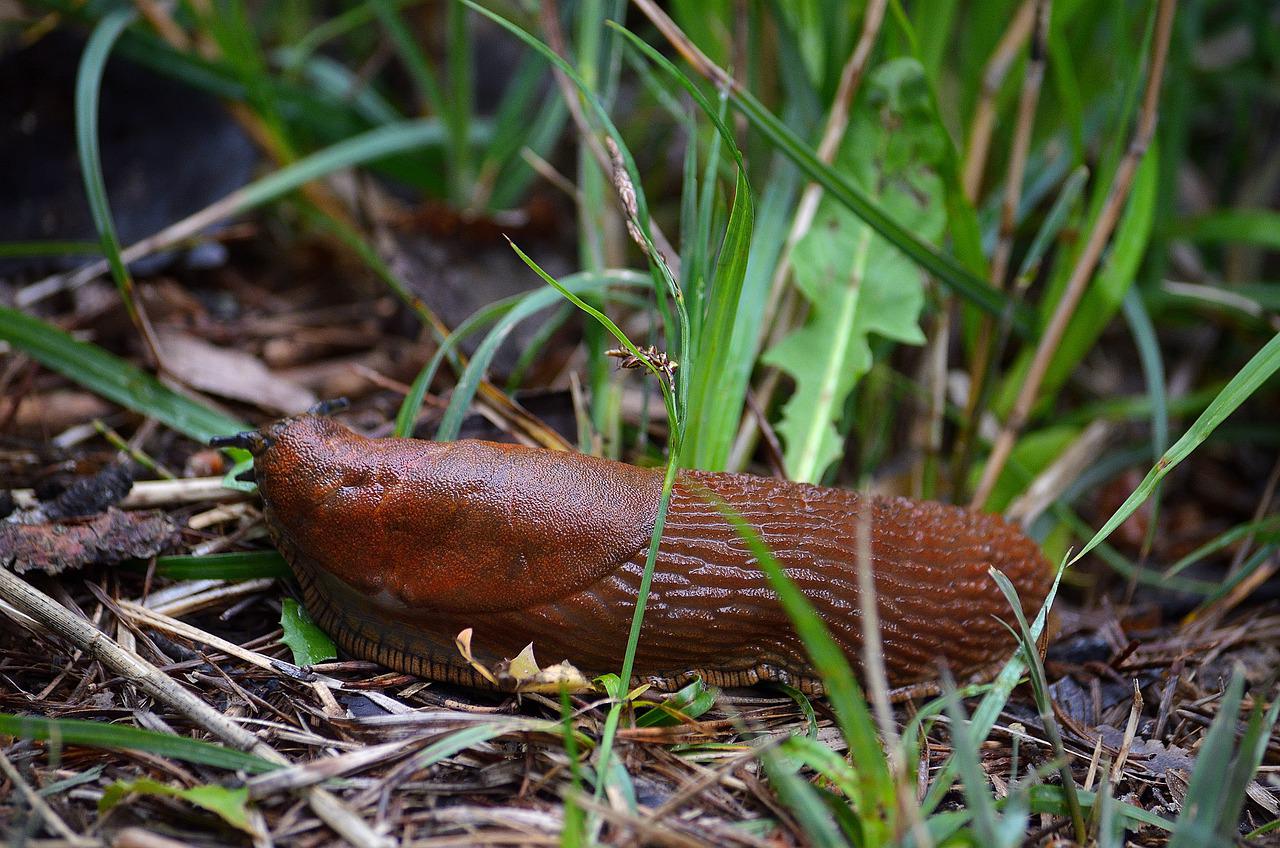
There is a wide variety of slimy garden inhabitants. It is important to distinguish between harmful and harmless slugs and snails. The real pests are mainly the voracious slugs. In contrast to the shell snails, they do not have a shell/housing but are, as the name suggests, naked. They can be reddish, brown, grey, black or yellowish in color and can grow up to 15 cm/5.9 in long, depending on the species. The damage can usually be recognized by the traces of mucus on the eaten leaf parts or directly by the snails on them. You can find out more about How to Control and Keep Slugs Away in the article on this topic.
Combat Voles
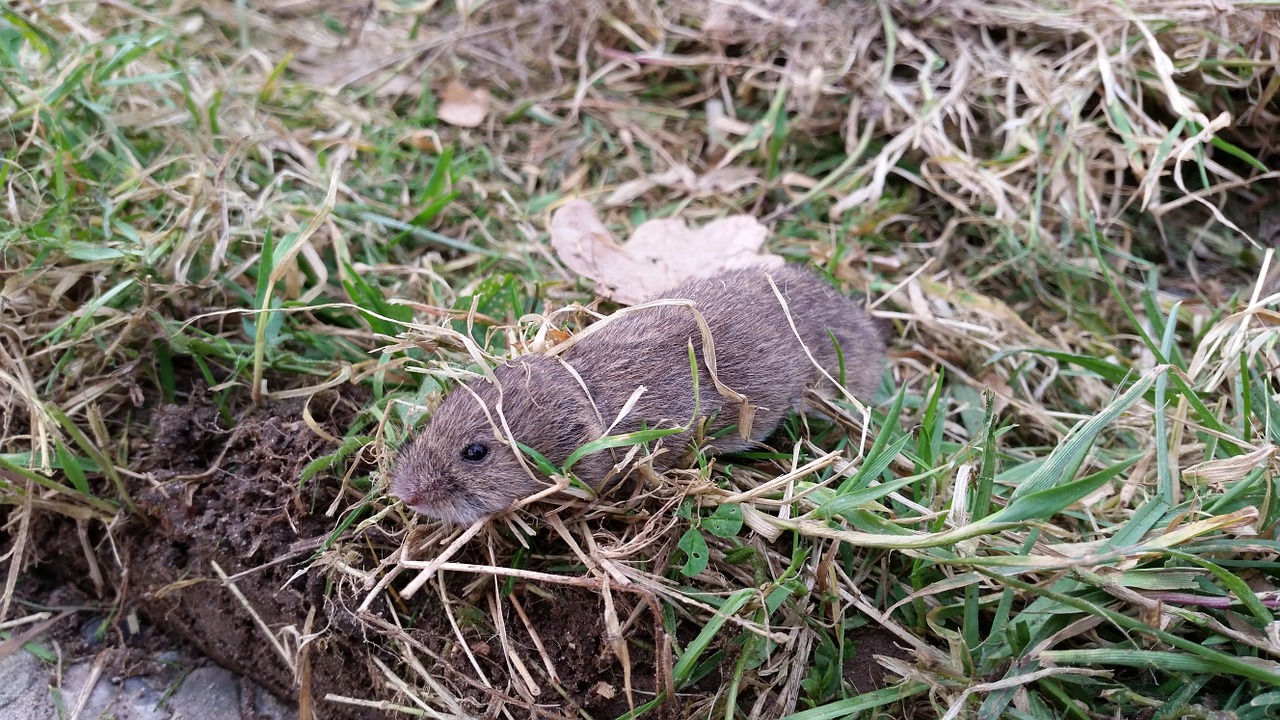
Voles can become real pests in the garden, as they love to eat the roots of vegetables. Root vegetables such as potatoes, Jerusalem artichokes, beet and carrots are naturally at the top of their menu. But voles can also be a nuisance in ornamental gardens. Here they like to nibble on the roots of rose plants or flower bulbs.
As voles know no garden boundaries, it is important to work together with your neighbors to combat the rodents. In addition, we do not recommend harsh defense methods such as chemical poison baits, as these can lead to an extremely gruesome death or can be eaten by other animals or small children. You can find out how you can take action against voles in our article on How to Repel and Control Voles.
Fighting Spider Mites: These Household Remedies Help
The pests can infest your plants in the bed as well as your houseplants. They have piercing-sucking mouthparts, which they use to pierce and suck out the leaf cells on the underside of the leaves. Spider mites (Tetranychidae) are arachnids and therefore have 8 legs. In Germany, there are around 100 different species of spider mites, of which the "red spider", also known as the fruit tree spider mite (Panonychus ulmi), and the common spider mite (Tetranychus urticae) are probably the most important.
Recognize Spider Mites
You can recognize infestations of the common spider mite by a web or webbing, usually at the leaf axils or leaf edges. There are tiny mites (0.2 - 0.8 mm/0.008 - 0.03 in) on the underside of the leaves. The body color of the pests can vary from green to yellow to reddish brown. They prefer to infest plants such as cucumbers, roses and beans. But it does not stop at pumpkin plants or ornamental plants either. The fruit tree spider mite, on the other hand, hardly forms any webs. However, the infestation of the pest can be recognized by tiny light dots on the leaves and the mites on the underside of the leaves. If the damage is severe, individual leaves may also dry out and fall off. As its name suggests, the mite species attacks fruit species such as apples, pears, plums, damsons and peaches, but also berry bushes such as blackberries, currants, strawberries and gooseberries. Spider mites feel most at home in sheltered conditions and are therefore often found in greenhouses or rooms. Like aphids, the pests can transmit viral diseases to plants, which are difficult to treat. It is therefore important to recognize or prevent spider mites at an early stage.
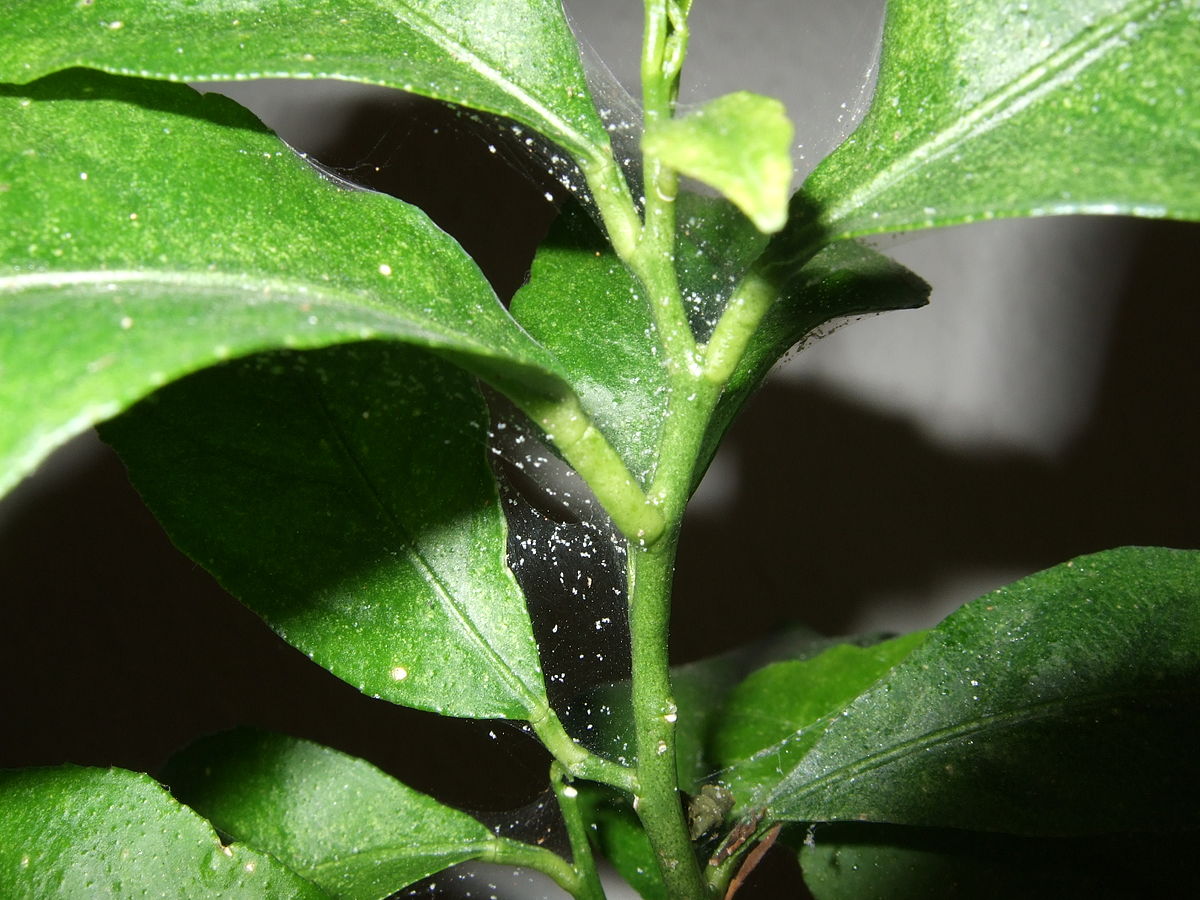
Prevent Spider Mites
- In dry weather, spray the plants regularly with water. This reduces the activity of spider mites. However, make sure that it does not get too damp, especially in the greenhouse, as otherwise fungal diseases could spread!
- Water sufficiently to keep the plant strong. A layer of mulch can help prevent dehydration, especially on hot summer days.
- Clean climbing aids such as bean poles or tomato spirals thoroughly after use so that no pests are transferred or overwinter on them.
- Support plants with balanced fertilization. It is important not to fertilize with too much nitrogen, otherwise the plants will grow too quickly and the cell walls will remain thin. We therefore recommend a potassium-emphasized fertilization, for example with nettle or comfrey manure.
- Trunk care for fruit trees: In the fall, protect endangered trees with a white trunk coating. You can also buy organic paint variants here.
- Encourage beneficial insects such as ladybugs, predatory bugs, ground beetles, parasitic wasps or spiders. For example, through stone piles, deadwood piles, hedges or other natural garden elements. Special parasitic wasps or lacewing larvae can also be purchased from specialist retailers.
Home Remedies for Spider Mites:
- In case of light infestation, regularly rinse bedding plants or houseplants with water. Potted plants can also be placed in a transparent plastic bag afterwards. The pests are driven away by the humidity in the bag.
- Spray horsetail or tansy broth. Horsetail broth: 1 kg/2.2 pd of fresh herb to 10 L/21 pt for 24 hours. Then simmer for half an hour. After cooling, strain and spray several times a day. Tansy broth: 300 - 500 g/10.56 - 17.6 in fresh herb to 10 L/21 pt of water. Strain after 24 hours and spray on affected areas several times a day.
- Spray garlic tea: 80 g/2.8 fl. oz. to 10 L/21 pt of hot water. Leave to infuse for at least 5 hours. Also effective against fungal diseases.
- Remove affected plant parts from pruning-compatible plants and dispose of in the residual waste.
- Use beneficial insects such as predatory mites or gall midges. These act as natural enemies of spider mites and can be purchased from specialist retailers. Beneficial insects are particularly effective in greenhouses.
- Sprinkle stone meal on affected plants. The mites rub against the fine grains and bleed to death.
- Spray neem oil (effective control method).
Recognizing and Combating Scale Insects in the Garden
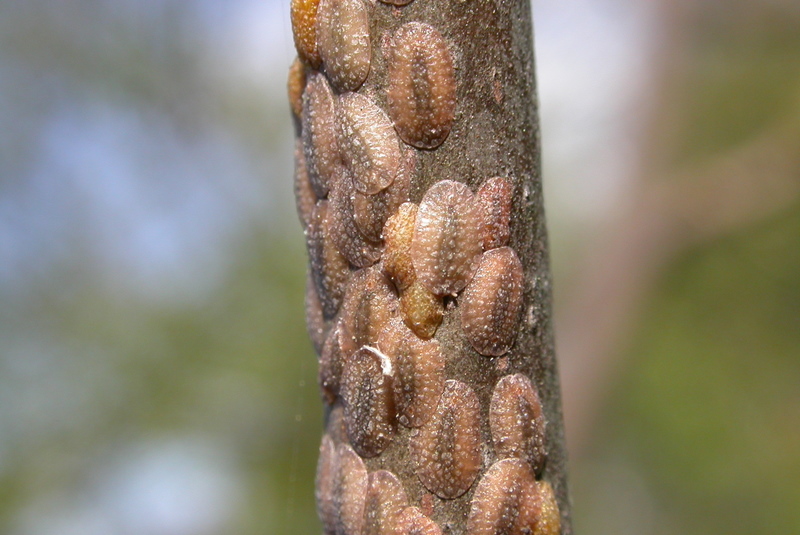
Scale insects are among the most common pests of houseplants, balcony plants and garden plants. Together with aphids, they belong to the superfamily Coccoidea. As their name suggests, scale insects have a firm, waxy "shield" that serves as protection against predators. Scale insect infestations can be recognized by crusts on many scale insect shells on branches or trunks. The wood can also be damaged, sometimes even causing entire branches to fall off. Red spots can form on pears and apples due to sucking damage caused by the scale insects. Plants particularly at risk are fruit trees, oleander, laurel, many houseplants (especially orchids, ficus, palms) and citrus plants.
Prevent Scale Insects
- Encourage beneficial insects through natural gardens (rock piles, deadwood piles, hedges, meadows)
- Thoroughly check newly purchased (indoor) plants for pests. Scale insects are also on the move at low temperatures and can therefore be easily transferred from nurseries to cold greenhouses.
- Balanced fertilization: Rather potassium-emphasized with comfrey or nettle slurry.
- Mulch layer
- Loosen thesoil around plants
- Bright, well-ventilated location
- Trunk coating. Protect endangered trees with a white trunk coating in the fall. You can also buy organic paint variants here.
Fighting Scale Insects With Home Remedies:
- To control aphids on ornamental plants, crush the aphids and wash the leaves with soapy water and a cloth.
- On woody plants: brush the trunk to remove scale insects
- Tansy broth: 300 - 500 g/10.56 - 17.6 in of fresh herb to 10 L/21 pt of water. Strain after 24 hours and spray on affected areas several times a day.
- Garlic tea spray: 80 g/2.8 fl. oz. to 10 L/21 pt of hot water. Leave to infuse for at least 5 hours. Also effective against fungal diseases.
- Neem oil
Mealybugs
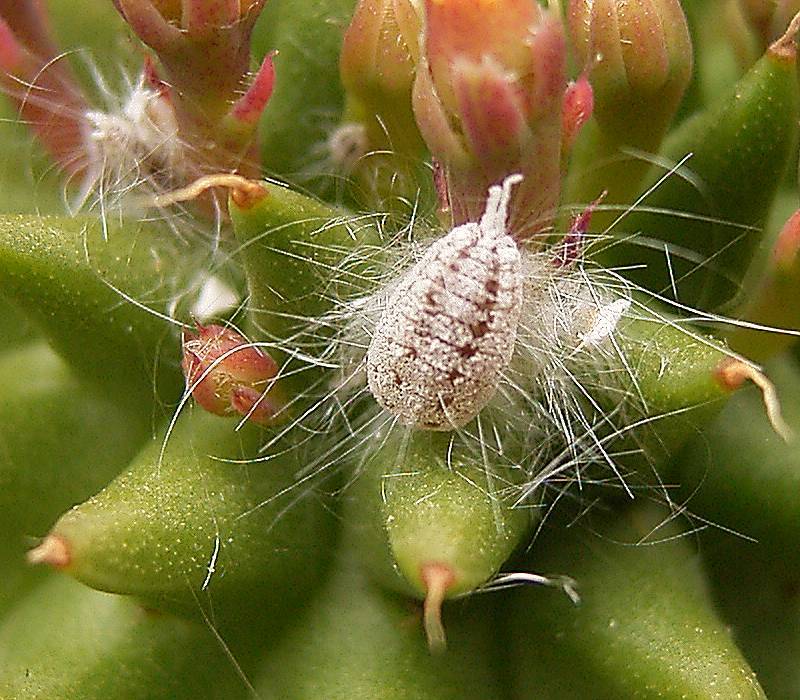
Mealybugs are also known as mealybugs or root lice. Their name says it all: they look as if they are surrounded by white absorbent cotton. They form a subfamily of scale insects, which includes around 1000 different species. There are two main species in Europe: The citrus mealybug (Planococcus citri) and the long-tailed mealybug (Pseudococcus longispinus). Like aphids, they also suck on leaves and stems, but also on roots. Mealybugs also secrete honeydew, which can cause the black sooty mold fungus to form on the plant parts. The leaves of infested plants turn yellow and fall off after heavy infestation. Infestation on potted plants can also be recognized when repotting, when white smear marks appear on the inside walls of the pot. Preferred plants for mealybugs are:
- grasses (bamboo)
- asteraceae
- legumes (beans, peas, ...)
- houseplants (orchids, rubber trees, alocasia, yucca palms, ...)
- citrus trees
- olive trees
- oleander
- hydrangea
Preventing Mealybugs
- Appropriate location: sufficient light and good ventilation, avoid dry heating air for indoor plants
- Balanced fertilization: not too much nitrogen, more potassium, in the garden with nettle or comfrey manure
- Establish natural enemies: Ladybugs, ichneumon wasps, lacewings, ... through natural, wild garden elements such as deadwood or stone piles, insect hotels, flowering meadows, hedges
Combating Mealybugs / Remedy
- Isolateaffected plants if possible, ideally in a bright and cool place
- Spirit and curdsoap mix: 15 ml/0.525 fl. oz. spirit and 15 ml/0.525 fl. oz. curd soap to 1 L/21 pt of water, spray the plant every 2-3 days
- In case of root infestation of potted plants: Repot, remove the substrate from the roots and rinse, use a new plant container and disinfect the old one with alcohol.
- Acquire beneficial insects such as lacewings or parasitic wasps
- Neem oil
I hope I was able to give you a brief overview of the most important pests. If you have any questions or comments, just send an email to magazin@fryd.app. Do you want to get helpful gardening tips all year round and plan your own beds optimally? Then register here or download the Fryd app for Android or iOS.
Fryd - your digital bed planner
Cover picture by alexas_fotos on pixabay.
Isabell
Current Topics in the Community

#red , #tuesday

Liked 1 times
#testpostcount

Dec 2025
Popular Articles

Companion Plants for Carrots: What (Not) to Plant With Carrots

Companion Plants for Celery : What (Not) to Plant With Celery?

Strawberry Types: List of Best Strawberry Varieties

Companion Planting With Strawberries: Companion Plants and Planting Plan

Basil Varieties & Types at a Glance

What to Plant With Cabbage: Good and Bad Companion Plants

Fertilizing Strawberries: Home Remedies & Natural Fertilizers at a Glance

Growing Sweet Potatoes: Tips on Cultivation & Companion Plants

Companion Plants for Kitchen Herbs: Chives, Parsley & Co

What Herbs Can Be Planted Together?
FAQ
Plant pests are organisms that damage crops by destroying them, reducing their yield or even destroying them completely.
How can you prevent pests in the garden?
Preventive measures include the promotion of beneficial insects, the right choice of location for plants, balanced fertilization and checking newly purchased plants for pests.
Which household remedies help to control pests?
Natural control agents include neem oil, homemade plant juices and broths, collecting insects and snails and dusting with stone dust.
What needs to be considered when controlling grubs?
Grubs can be controlled by collecting them, planting plants that are poisonous to them, such as geraniums or delphiniums, and using nematodes.
How do you recognize and control spider mites?
Spider mite infestation can be recognized by spider webs on plants. Preventive measures include regular spraying with water and balanced fertilization. In case of infestation, rinsing the plants and spraying horsetail or tansy broth will help.